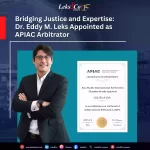The Supreme Court of Republic of Indonesia Regulation No. 2 of 2015 on the Procedure of Simple Court Settlement (“Perma No. 2 of 2015”) was issued to regulate the examination of simple claim in court. Prior to the issuance of Perma No. 2 of 2015, the settlement of civil cases examined without distinguishing value of the claim, assessment the simple or not the claim and also simple or not the procedure of the authentication, so the simple court settlement of civil cases takes a long time.
Simple Claim
Simple claim is a civil claim with the claim material value at maximum of Rp 200.000.000, – (two hundred million Rupiah), with regard to breach of contract and / or unlawful act (“Simple Claim”). Simple Court Settlement is the procedure of examination at the trial of the Simple Claim, that will be completed with a simple procedure and evidentiary.
Case or dispute that is not included in the Simple Claim is (i) dispute that is carried out through special court; or (ii) disputes over land rights. Other requirements that must be fulfilled in Simple Claim are:
a. the disputing parties consist of the plaintiff and defendant, respectively should not be more than one, unless it has the same legal interest;
b. resident address of defendant must be known;
c. the plaintiff and defendant are domiciled in the same court of law;
d. plaintiff and defendant shall attend in person every trial with or without the presence of legal counsel.
Procedural Law and Simple Court Settlement Stage
Simple Court Settlement Stages include (i) registration; (ii) examination of the completeness of the simple court; (iii) determination of justice and the appointment of a replacement clerks; (iv) preliminary investigation; (v) trial’s day determination and summoning the parties; (vi) trial examination and conciliation; (vii) evidentiary; and (ix) court decision.
Simple Court Settlement must be done no later than 25 (twenty five) days from the day of the first trial.
Simple Court Examination
As below are the stages of Simple Claim’s examination:
a. Registration
Simple Court Registration registered by the plaintiff in the court registry office by filling out the form provided. Plaintiff also required to attach documentary evidence that has been legalized.
b. Examination of Simple Claim Completeness
Registrar examination the registration requirements of Simple Claim, and if it complies with the registration requirements of Simple Claim, the registrar take noted in a special register book of Simple Claim. Then, the plaintiff pay the down-payment court fees stipulated by the chairman of the court.
c. Judge Determination and the Appointment of Replacement Registrar
Chairman of the court assigns a judge to examine the Simple Claim, registrar and registrars appoint a replacement registrar to help judges that has been nominated.
d. Preliminary Examination
At this stage the judges check the substance of Simple Claim and evaluate the simplicity of the evidentiarty. If the judge believes that the claim cannot be categorized as a Simple Claim, the judge issued a determination by decision (i) that the claim is not Simple Claim, (ii) strike out the claim from the case register, and (iii) ordered the return of the rest of the court fees to the plaintiff.
e. Trial Day Stipulation
If the judge finds the plaintiff’s claim is a Simple Claim, the judge then stipulates the first trial.
f. Summoning and the Presence of the Parties
If the plaintiff is not present at the first trial without a valid reason, then the claim is disqualified. If at the second notice of trial the plaintiff is not present, the judge decides the case. If the defendant is present on the day of the first trial and absent on the next day without a valid reason, the claim checked and rendered as contradictory. With regards to the decision, the defendant may raise objections.
g. Trial Examination and Settlement
On trial’s day, the judge is obliged to seek for settlement. If settlement is reached, the judge makes the deed of settlement decision. But if settlement is achieved outside the trial and the settlement is not reported to the judge, the judge is not bound by that settlement.
h. Evidentiary
Examination of evidence that is done by the Judges is only for the denied claims.
i. Decision and Minutes of Court Hearings
The decision read by the judge in a trial that is open for public and the judge shall notify the rights of the parties to filed an objections.
j. Legal Remedy
The remedy of asimple claim decision is by filing an objection no later than 7 (seven) days after the decision.
k. Objection Examination
Examination of an objection made by the panel of judges led by senior judge conducted on the basis of: (i) decision and brief of simple claim; (ii) appeal request and memory of objection; (iii) counter memory of objection
l. Objection Decision
Decision on the petition of objection made at least 7 (seven) days after the panel of judges’ stipulation. Decision of objection is final and cannot be filed any legal remedy such appeal, cassation, or reconsideration. If there is no objection against the decision of a Simple Claim then the decision is finally binding.








